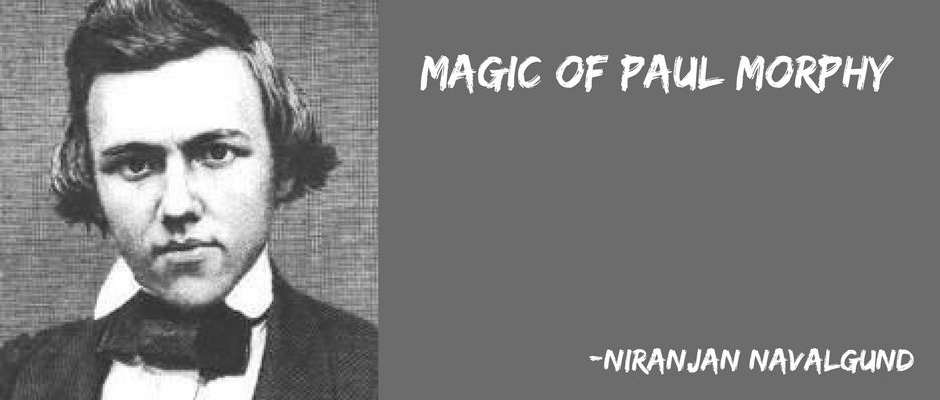Magic of Paul Morphy
If you want to study classics, start with Paul Morphy. In this article, I’ll share a few beautiful games of Paul Morphy. His games are grand and adventurous, often leading to checkmates. He was considered as the pioneer of his era. Paul Morphy was born on 22nd June 1837. He started chess at the age of 10 and was already beating local masters by the age of twelve.
He completed law before reaching the legal age of practicing law. On his uncle’s initiation, he decided to challenge the best players of America in the 1857 Congress. He defeated the best players of the US and was declared the best player of the country!
In the next year, he traveled to Europe and won games against many masters during the trip. It is a pity that the chess world could not witness a game between Staunton and Morphy. Some of the articles claim that Staunton avoided the match, but I don’t know much about it.
One of the crazy things about Morphy is that he played matches where the opponent received knight and rook odds!
Let’s get the board and start moving!
The game is a textbook example of the dangers of developing the Queen early in the game:
When I told my student not to develop the Queen early in the game, he asked me ‘why?’
I showed the following game to him and he was convinced. Thank you, Morphy!
On a serious note, developing the Queen early could give a lot of tempo to your opponent. The Queen is a powerful piece, but prone to getting attacked by the pieces of lesser value. You might lag behind in the development and end up suffering. Of course, exceptions exist.
In the next game, Morphy played without the knight on b1. Play through the game for fun and not for the objectivity or the correctness of the moves:
Morphy,P – Worrall,T
New Orleans, 1857
1.e4 e5 2.f4 exf4 3.Nf3 g5 4.Bc4 g4 5.d4!
You want the knight? Morphy says ‘take it!’
gxf3 6.0–0 Bh6 7.Qxf3 Nc6 8.Bxf7+
Kxf7 9.Qh5+ Kg7 10.Bxf4 Bxf4 11.Rxf4
It makes me wonder if playing without the knight on b1 was a killer masterstroke! The rook on a1 can join the game without having to worry about the knight since there is no knight on b1!
Nh6 12.Raf1
Tal once said that you need at least three pieces to launch a successful attack.
Qe8 13.Qh4 d6 14.Qf6+ Kg8 15.Qxh6 Bd7 16.R1f3 Ne7
The Black knight is coming to secure the g file. Knight is the best defender, right? So, what will you play as white?
17.h4!
Ng6 18.h5 Bg4 19.hxg6 hxg6
White to play and Mate in three!
20.Rf8+! Qxf8 21.Rxf8+ Rxf8 22.Qxg6#
A cute finish
1–0
White to play and win
White to play and win
White to play and win
White to play and win
White to play and win
Solutions:
Learning from Morphy:
- Develop your pieces as fast as possible
- If your opponent is busy gobbling pawns and pieces, catch his king in the centre

